Breast Reconstruction in Tokyo
Search and Compare the Best Clinics and Doctors at the Lowest Prices for Breast Reconstruction in Tokyo

Find the best clinics for Breast Reconstruction in Tokyo
No clinics available
India offers the best prices Worldwide
Price: $ 477
Compare Before & After Photos of _procedure_photos.phpBreast Reconstruction
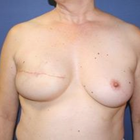
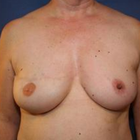
Front view
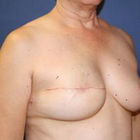
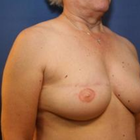
Half-side view
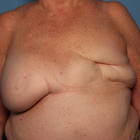
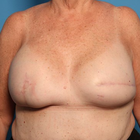
Front view
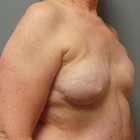
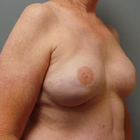
Half-side view
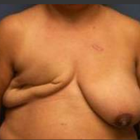
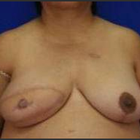
Front view
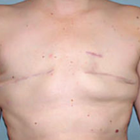
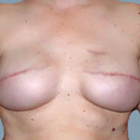
Front view
WHY US?
At Medijump, we're making medical easy. You can search, compare, discuss, and book your medical all in one place. We open the door to the best medical providers worldwide, saving you time and energy along the way, and it's all for FREE, no hidden fees, and no price markups guaranteed. So what are you waiting for?

Free

Best Price

Widest Selection

Risk-Free
What you need to know about Breast Reconstruction in Tokyo
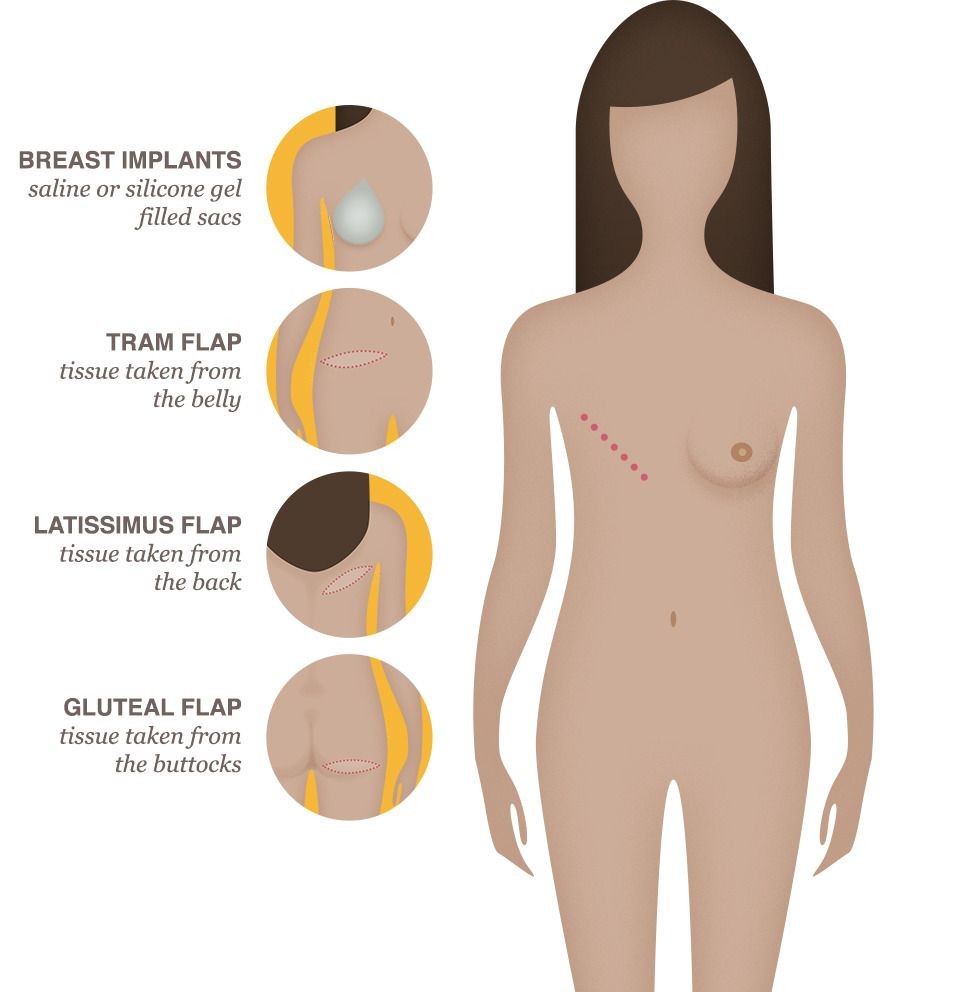
Breast reconstruction is a significant surgery undertaken to rejuvenate the physical form of a woman's chest after losing one or both breasts to cancer or another disease. In Tokyo, medical centres are well-equipped with top-tier talent in plastic surgery to facilitate this intricate procedure. Every woman's journey is different, and her treatment plan is personalized, considering her unique circumstances and needs.
It's heartening to know that breast cancer treatments like chemotherapy or radiation therapy aren't impeded by reconstruction. Moreover, this surgery doesn't spike the risk of cancer coming back. Undeniably, breast reconstruction is a major surgery with inherent risks, including chances of infection, complications with wound healing, and potential dilemmas related to implants.
What is the cost of Breast Reconstruction in Tokyo?
Undergoing surgery like Breast Reconstruction brings along a financial commitment. The expense varies extensively, depending on many factors like the complexity of the procedure, the medical professional performing the surgery, the hospital's facility, and the region, amongst others. Generally, the cost might range between $15,000 to $50,000, including multiple surgeries or intricate techniques within this estimate.
Thankfully, in many cases, insurance plans cover such surgical procedures, especially given mandates like the Women's Health and Cancer Rights Act of 1998 in the U.S. Still, out-of-pocket expenses associated with co-payment or deductibles can add up. It's recommended to navigate these aspects with your insurance provider and your chosen healthcare facility in Tokyo.
What does a Breast Reconstruction Procedure Involve?
Breast reconstruction generally happens in stages, starting with the most complex first, which may either occur at the same time as the mastectomy or later, based on the individual’s specific health conditions or treatment plan.
Two main techniques are employed in breast reconstruction. One is the use of an implant, saline, or silicone to recreate the breast shape. Two, autologous or flap reconstruction where tissue from the patient’s body like the abdomen or thigh is relocated to recreate the breast shape. The method selected is dependent on individual factors like the patient’s health, personal choice, cancer type, and stage.
After the primary surgery and post an adequate healing period, the surgeon performs a second procedure to recreate the nipple and areola. Later, to give it a natural look, the nipple-areola complex is tattooed. Remember that although it is a common procedure, complications might arise involving reaction to anaesthesia, bleeding, infection, poor healing or the need for further interventions.
How Long Should I Stay in Tokyo for a Breast Reconstruction Procedure?
Post-breast reconstruction surgery, patients typically stay in the hospital for two to five days. However, if the reconstruction was done immediately after the mastectomy, the stay could extend from three to six days.
Overall, a patient should expect to remain in Tokyo for approximately two weeks post-surgery. This allows enough time for necessary follow-ups and to address any complications, if they arise. As with any major surgical procedure, do not hasten the healing process.
What's the Recovery Time for Breast Reconstruction Procedures in Tokyo?
The recovery timeframe for breast reconstruction procedures in Tokyo varies from patient to patient. Generally, for implant-based procedures, patients may take about four to six weeks to recuperate before they return to normal routines. For more complex autologous techniques, particularly those using abdominal tissue, patients might require six to eight weeks for recovery.
Recovering patients need to temper their activities during this period. Avoid lifting heavy objects and defer strenuous exercise until your physician gives a clear signal. Medical assistance should be promptly sought if any discomforting symptoms like chronic pain, redness or swelling surface.
What's the Success Rate of Breast Reconstruction Procedures in Tokyo?
Medical success cannot just be measured in terms of complication-free postoperative progress or longevity of implants used in breast reconstruction. Patient satisfaction with their surgery, their psychological well-being following the operation, their perception of body image, and their quality of life post-surgery are equally important factors to consider. Studies indicate that between 85% to 90% of women who have undergone breast reconstruction are satisfied with the long-term results.
In Tokyo, dedicated hospitals and healthcare facilities strive to offer high-quality treatment, ensuring the best possible surgical outcomes using progressive technology and experienced professionals. Still, everyone's response to surgery varies, and outcomes depend on factors such as overall health, age, body type, and compliance with surgical advice.
Are there Alternatives to Breast Reconstruction Procedures in Tokyo?
Indeed, there are alternatives to breast reconstruction in Tokyo. The journey of every woman is unique and how she chooses to deal with the loss of a breast, or both, is a highly personal decision. Alternatives include:
- Breast Prostheses or Forms: They are silicone forms that imitate the appearance and feel of natural breast tissue. They come in diverse sizes, shapes and colours to closely match the woman's skin tone.
- Flat Closure: In this method, the surgeons sew up the chest wound smoothly, without constructing a breast mound. This option appeals to women who choose not to have more surgeries or body implants.
- Opting not to undergo reconstruction at all, also termed as "going flat: This method exhibits the woman's choice to live comfortably with her new body shape without artificial substitutes or further surgeries. It is a fully personal decision deserving respect and support.
Each of these options has pros and cons, and the choice depends on the woman’s personal preference, health status, lifestyle, and perception of her body. Regardless of the choice, it’s important to regularly monitor breast health and engage in practices that promote overall wellness.
What Should You Expect Before and After the Breast Reconstruction Procedure?
Before the surgery, comprehensive discussions with the surgeon will take place to understand treatment objectives, outcomes, and possible complications. Preoperative tests, lifestyle modifications, and nutritional advice may form a part of the preparatory process.
Postoperative care is equally important: discomfort, swelling, and bruising are normal and subside over time. Pain management strategies will be provided to help you manage discomfort effectively. Your surgeon will provide personalised guidance on caring for your surgical site, usage of medications, and physical activities.
What sort of Aftercare is Required for Breast Reconstruction Procedures in Tokyo?
The following points should be considered post-operation:
- Follow the instructions given by your doctor and take your medicines as and when prescribed.
- Consult a nutritionist for a diet plan. A healthy diet helps you recover faster.
- Do not wear a padded or underwire bra until allowed by your doctor.
- Use surgical bras in the early few days after the surgery.
- Avoid excessive unnecessary movement of your breasts.
- Do not lift heavy objects and children - it could stretch on your stitches.
- Change your bandage whenever it gets dirty. Germs can cause infection.
- Do not take a bath when the bandages are still intact. A wet bandage can also be the cause of infection.
- Abstain from sexual activity for at least 6 weeks.
- Take rest - give yourself time to recover.
How Do I Prevent Cancer from Recurring?
Preventing cancer recurrence largely revolves around a balanced, healthy lifestyle coupled with regular medical check-ups. Regular exercise, maintaining a healthy weight, and eating nutritiously can contribute to cancer prevention. Smoke cessation and limiting exposure to secondhand smoke are crucial for both prevention and postoperative recovery.
Regular breast self-examinations, as well as mammograms and follow-up visits, are critical for early detection of any recurrence. Stress management techniques like yoga, meditation, and spending time in nature can also play an essential role in overall health.
Your medical team in Tokyo is there to support you, offering advice tailored to your individual health status and medical history. Remember, proactive health checks are key to maintaining overall health and preventing the recurrence of diseases like cancer.
What is the ideal time to have Breast Reconstruction surgery after a Mastectomy in Tokyo?
The decision regarding when to have Breast Reconstruction following a Mastectomy in Tokyo is largely based on the individual's health status, treatment plan, personal preferences, and discussions with the oncology team. Breast reconstruction can be done at the time of mastectomy (immediate reconstruction) or at a later date (delayed reconstruction). Immediate reconstruction might offer psychological benefits and less overall surgery since both procedures are done together. Yet, if additional treatments such as radiation therapy are required post-mastectomy, opting for delayed reconstruction could be advisable to avoid risks posed by radiation to the new construct.
Remember that deciding on the timing of breast reconstruction is a personal choice and should be made in consultation with your healthcare providers. They can provide specific guidance based on your health condition and treatment plan.
How Will Breast Reconstruction in Tokyo Impact My Routine Mammograms and Breast Cancer Detection?
Breast reconstruction surgery may impact the way routine breast cancer screenings are conducted. After a mastectomy with or without reconstruction, women usually don't need routine screening mammograms on the treated side since all breast tissue has been removed. However, they would need routine mammograms for the untreated breasts.
If you've had reconstruction using your own body tissue, your surgeon or oncologist will guide you on whether or not you'll require mammograms on the reconstructed breast. Remember, mammograms can still be performed on reconstructed breasts, and self-breast exams should be a regular part of your health routine.
Whilst the information presented here has been accurately sourced and verified by a medical professional for its accuracy, it is still advised to consult with your doctor before pursuing a medical treatment at one of the listed medical providers
No Time?
Tell us what you're looking for and we'll reachout to the top clinics all at once
Enquire Now

Popular Procedures in Tokyo
Prices Start From $497

Prices Start From $208

Prices Start From $834

Prices Start From $500

Prices Start From $93

Prices Start From $85

Recommended Medical Centers in Tokyo for procedures similar to Breast Reconstruction

- Interpreter services
- Translation service
- Religious facilities
- Medical records transfer
- Medical travel insurance
- Health insurance coordination
- TV in the room
- Safe in the room
- Phone in the room
- Private rooms for patients available

- Interpreter services
- Translation service
- Religious facilities
- Medical records transfer
- Medical travel insurance
- Health insurance coordination
- TV in the room
- Safe in the room
- Phone in the room
- Private rooms for patients available

- Interpreter services
- Translation service
- Religious facilities
- Medical records transfer
- Medical travel insurance
- Health insurance coordination
- TV in the room
- Safe in the room
- Phone in the room
- Private rooms for patients available

- Interpreter services
- Translation service
- Religious facilities
- Medical records transfer
- Medical travel insurance
- Health insurance coordination
- TV in the room
- Safe in the room
- Phone in the room
- Private rooms for patients available

- Interpreter services
- Translation service
- Religious facilities
- Medical records transfer
- Medical travel insurance
- Health insurance coordination
- TV in the room
- Safe in the room
- Phone in the room
- Private rooms for patients available
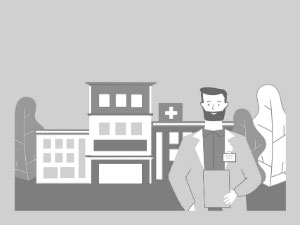
- Interpreter services
- Translation service
- Religious facilities
- Medical records transfer
- Medical travel insurance
- Health insurance coordination
- TV in the room
- Safe in the room
- Phone in the room
- Private rooms for patients available

- Interpreter services
- Translation service
- Religious facilities
- Medical records transfer
- Medical travel insurance
- Health insurance coordination
- TV in the room
- Safe in the room
- Phone in the room
- Private rooms for patients available

- Interpreter services
- Translation service
- Religious facilities
- Medical records transfer
- Medical travel insurance
- Health insurance coordination
- TV in the room
- Safe in the room
- Phone in the room
- Private rooms for patients available
Breast Reconstruction in and around Tokyo
About Tokyo
Tokyo is Japan’s capital. It is one of the 47 prefectures of the country. There are over 13.9 million people estimated to live there. The capital is a giant metropolis that offers tourists the chance to indulge in the traditional Japanese culture, eat in one of its delicious restaurants, or learn more about modern life. One of the most popular sights in Tokyo is the cherry blossoms that fill the streets and parks with pink petals in Spring. The soft pink petals are an icon of the country.
Among the 30 million people who traveled to Japan in 2018 are medical tourists. With a vast range of high-quality medical services and facilities, Tokyo has a large contribution to the country’s growing medical tourism. it has numerous public and private hospitals that offer outstanding healthcare. These hospitals are equipped with cutting-edge medical technology and highly qualified doctors. Many doctors and medical professionals speak fluent English.
As Japan was ranked the highest in five-year survival rates of lung cancer and esophagus cancer patients from 2010 to 2014, the most sought-after medical procedure is Tokyo oncology treatments. There are many medical facilities in the area that are JCI-accredited and offers a wide range of treatments including Breast Augmentation procedures.
Popular Areas in Tokyo
Tokyo is sprawling with many extraordinary attractions and sights. It is the perfect mixture of traditional and modern. From temples, shrines, futuristic infrastructure, robot restaurants, booming nightlife, nature to anime, all coexist peacefully here.
To see a beautiful city view, climb up the Tokyo Skytree, Tokyo Metropolitan Government Building, and Tokyo Tower. Visit Tokyo’s oldest temple, Sensoji Temple in Asakusa, and learn more about the history and traditions. The temple is surrounded by numbers of Japanese restaurants that serve authentic dishes including Sushi, Tempura, and Sukiyaki. Tourists can also try a variety of traditional activities like wearing a Kimono dress.
Not far from Asakusa is Ueno, where one of the biggest parks in Tokyo is located. Ueno Park is the perfect place to spend a beautiful day. The park consists of a zoo, museums, historical monument, and green spaces. To try out Tokyo’s futuristic and modern side, come to the first digital art museum in the world, MORI Building DIGITAL ART MUSEUM — teamLab Borderless. Experience a unique interactive art with the latest technology and immerse in multiple digital art exhibitions.
Shopping is also one of the main attractions in Tokyo. Tourists most favorite places to shop are Ginza, Nakamise Shopping Street, as well as Takeshita Street and Omotesando in Harajuku. For anime or Disney fans, attractions such as Ghibli Museum, Fujiko F Fujio Museum, Pokemon Center, Tokyo One Piece Tower, Nakano Broadway, Akihabara, Tokyo Disneyland, and Tokyo Disney Sea are some of the best places to visit.
Weather and Climate in Tokyo
Tokyo is a year-round destination because it has temperate weather with four distinct seasons.
- Summer is hot and humid with an average temperature of 21 to 32 °C. Sometimes it can get as high as 40 °C. this season starts in June and ends in August. June sees a lot of rainfall while August is the start of typhoon season.
- Autumn lasts from September to November. The typhoon season peaks in November. The weather during this season is mild with less humidity. It is pleasantly warm in October, making it one of the best times to travel in Tokyo.
- Winter comes in December and lasts until February. The weather is dry and sunny with an average temperature of around 2 °C to 12 °C. The temperature rarely drops below 0 °C. There is very little snow in Tokyo.
- Spring starts in March to May. The temperature increases gradually during this season, with an average of 13 °C in the afternoon and 5 °C in the morning and evening. The sky is mostly clear during this season and it is also one of the best times to visit Japan because of the cherry blossoms.
Getting Around in Tokyo
Located around 60km east of central Tokyo, Narita International Airport is the main international gateway to Tokyo. The airport serves both domestic and international flights to almost every major city in the world. Budget airlines such as Jetstar Japan, Peach, and Eastar Jet operates flights from this airport.
Rail, bus, taxi, or car rental are available for tourists to reach the city center from Narita Airport. There are several train types to choose from. The Main Line (regular commuter train) in Keisei Line is the most affordable one, it costs around ¥1,190 to ¥1,230 ($10 to $11.3) and it connects with the Toei Asakusa Subway Line and the Yamanote Line. For faster travel, choose the Skyliner train that takes only 36 minutes to Nippori. This train costs around ¥2,470 ($22.7). There is another train known as the Sky Access Express train that offers better access to Tokyo. A trip to Asakusa takes about 58 minutes and costs around ¥1,290 ($11.9).
A taxi might not be the best option since it’s very expensive, it usually costs over ¥20,000 ($184) from Narita Airport to Tokyo. The more affordable option is the shared minibus which cost ¥6,180 ($57) per person. Buses are comfortable, the Limousine Bus costs around ¥2,880 ($26.5) and the Tokyo Shuttle costs around ¥900 ($8) to ¥1,000 ($9).
Tokyo is served by one of the best public transport systems in the world. Trains and subways are the best way to get around the city. It is the cheapest and fastest mode of transportation. Taxis are easily available and can be hailed on the street except in areas like Ginza, where taxis are only allowed to stop in taxi stands. The base fare is ¥430 ($4) for the first 1.5 km and ¥80 ($0.7) for every 237 meters.
Tourist Visas in Tokyo
Japan allows citizens of 68 countries and territories to stay in the country for up to 90 days. Citizens of Indonesia, Brunei, and Thailand are granted a 15-day visa-free trip. The country has a visa for a medical stay that grants long-term stays to medical tourists and approval for visa holders to travel back and forth between their home countries and Japan. Foreign visitors who visit Japan on tourist visas can also receive medical services, except for long-term therapies and surgeries that require more than three months.
Additional Information
- Local Currency: The official currency is the Japanese Yen (¥). There is around ¥111 per $1.
- Money & Payments: ATMs are widely available and can be found in post offices or convenient stores (especially 7-Eleven). Credit cards are accepted in some hotels, restaurants, and shops but it is advisable to always bring cash. Tipping is optional.
- Local Language: Japanese is the official language. Most people speak limited English but many restaurant menus and signs are written in both Japanese and English.
- Local Culture and Religion: The main religion is Shintoism and Buddhism. There is a small group of Christians in the city.
- Public Holidays: There are sixteen major public holidays in Japan. The city hosts annual festivals including Fuji Matsuri, Hinode Matsuri, and Tenno Matsuri.
Popular Searches
- Plastic Surgery in Thailand
- Dental Implants in Thailand
- Hair Transplant in Thailand
- Breast Augmentation Thailand
- Gastric Sleeve in Thailand
- Gender Reassignment Surgery in Thailand
- Laser Hair Removal in Bangkok
- Botox in Bangkok
- Dermatology in Bangkok
- Breast Augmentation in Bangkok
- Coolsculpting in Bangkok
- Veneers in Turkey
- Hair Transplant in Turkey
- Rhinoplasty in Turkey
- Stem Cell Therapy in Mexico
- Rhinoplasty in Mexico
- Liposuction in Mexico
- Coolsculpting in Tijuana
- Rhinoplasty in Korea
- Scar Removal in Korea
- Gastric Sleeve in Turkey
- Bone Marrow Transplant in India
- Invisalign in Malaysia
- Plastic Surgery in the Dominican Republic
- Tummy Tuck in the Dominican Republic
- Plastic and Cosmetic Surgery in Poland
- Rhinoplasty in Poland
- Hair Implant in Poland
- Dental Implants in Poland
- IVF in Turkey
